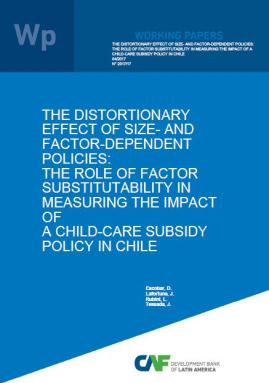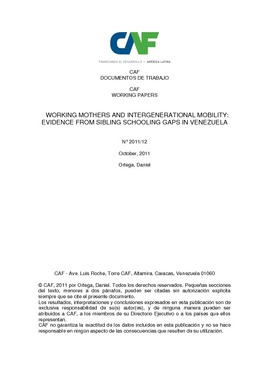The distortionary effect of size and factor dependent policies: The role of factor substitutability in measuring the impact of a child-care subsidy policy in Chile
Resumo
In an effort to increase female labor participation in Chile, firms with more than 19 women must pay for childcare for the children of their female employees. We evaluate the effects of such policy using a model that features firm heterogeneity and three factors of production: women, men and capital. In our model the policy misallocates resources, driving firms to stop hiring once they are close to the threshold, depressing female participation and wages. We calibrate the model to the Chilean economy, and analyze via counterfactuals the effects of removing this distortion. First, we find that the policy reduces female labor participation by 1%, and wages by 2%. Second, the policy redistributes welfare from men to women, increasing female welfare by 0.05%. Third, we suggest alternatives policies that would be more successful at increasing female labor participation. For example, financing childcare with a tax on profits would increase female labor participation by 4%, with similar welfare consequences as the policy in place.
Assunto
País / Región
Data
2017-04-04Cite esta publicação
Item que pertence à coleção
Autor
Escobar, DiegoLafortune, Jeanne
Rubini, Loris
Tessada, José
Items Relacionados
Training or technical assistance? A field experiment to learn what works to increase managerial capital for female microentrepeneurs
This study evaluates the impacts of a business training program serving female microentrepreneurs in Lima that have previously benefited with the titling ...
Housing Subsidies, Labor Supply and Household Welfare. Experimental Evidence from Argentina
We study the impact of a social housing policy program implemented in Argentina, exploiting the random assignment rule to identify the policy's causal ...
Working mothers and intergenerational mobility: evidence from sibling schooling gaps in Venezuela
This paper documents the change in intergenerational mobility over the 35 year period between 1975 and 2010 in Venezuela and finds that equality of ...






